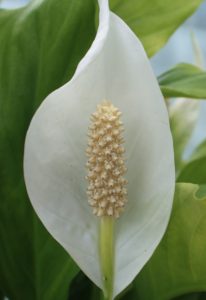Some links in the post are affiliate links and I get a commission from purchases made through some links found in the post.
Air pollution has for long been a subject of interest to researchers across the globe.
They cannot help but wonder how they can deal with this scourge that threatens the future of humanity.
It, however, turns out that outdoor plants can help fight this menace. And to do this, you can rely on a combination of indoor and outdoor plants.
You can even go bigger and plant trees in your yard for the ultimate effect, as we will cover in this article.
Do Outdoor Plants Reduce Air Pollution?
Yes outdoor plants do reduce air pollution. However, here is the thing. People spend the majority of their lives indoors, approximately 80% of their lifetimes.
Think about it. You sleep at home, work out at the gym, go shopping at the supermarket, work in an office, meet with friends in restaurants, and so on.
Most of these spaces are enclosed, and the air in these places would thus contribute to how healthy you are.
Studies show that millions of people die premature deaths because of indoor air pollution. Think about that.
 Indoor pollution is a mixture of air pollutants such as carbon dioxide and dust as well as contaminants in the home such as paints, fungal spores, and other allergens.
Indoor pollution is a mixture of air pollutants such as carbon dioxide and dust as well as contaminants in the home such as paints, fungal spores, and other allergens.
As such, targeting the outdoors alone would not be enough, and you would also need to think about protecting your indoors.
Outdoor and indoor plants, or any living plants in general, work to remove airborne pollutants and thus improve air quality.
They are also a sight for sore eyes, and they have been proven to elevate people’s moods, reduce stress levels, and positively impact productivity.
Now, how do these plants improve air quality? They do so simply by:
Photosynthesis
Plants rely on carbon dioxide to make their food, and a by-product of this process is oxygen.
Transpiration
Did you know that plants breathe? In this process, they release water vapor into the air, increasing the humidity and making the environment much more bearable.
Pollutant absorption
Plants also absorb the pollutants on their leaf and root surfaces.
Many studies have delved into the plants best known for offering such benefits. In our case, we will categorize them according to sizes: small, large, and trees.
Please note that the smaller plants can also work for indoor growth, enabling you to enhance the air in your home. Let’s get to it.
Top 5 Small Outdoor Plants that Reduce Air Pollution
The plants below work for both indoor and outdoor planting.
Their small sizes make them ideal for people who want to add some natural beauty to indoor spaces.
Below are some options you can choose for small outdoor plants that reduce air pollution:
Lady Palm
This small evergreen plant features bamboo-like canes and does well in hardiness zones 9-11 and heat zones 10-11.
It is one of the easiest plants to grow and is a common houseplant. It grows to heights and widths of fifteen feet and has low water and maintenance needs.
You can use it in containers or plant it in hedges and screens.
English Ivy
If you have shady conditions in and around your home, this evergreen perennial would be a good choice.
It can grow as a climbing vine or trail the ground cover, which shows its adaptability.
It also helps that it grows fast in hardiness zones 5-11 and heat zones 6-12, reaching heights of thirty feet and widths of fifteen feet.
Gerbera Daisy
This popular annual plant exudes an elegant evergreen aesthetic that is a welcome addition to any space.
The gerbera daisy thrives in hardiness zones 8-11 and heat zones 6-11 and does well in partial to full sun. Its height reaches two feet with a spread of two feet in the right conditions.
Given its radiance, this plant does well in both containers as well as plant beds and borders. You can also use it for edging.
Variegated Spider Plant
This ornamental perennial plant is relatively easy to grow and does well in hardiness zones 9-11 and heat zones 10-11.
It can reach heights and spreads of two feet, even in drought-like conditions as it has low maintenance needs.
Poinsettia
This Christmas favorite features red, pink, or creamy modified leaves that open in winter through to spring.
The poinsettia does well in hardiness zones 9-11 and heat zones 10-11, reaching heights of ten feet and widths of seven feet.
They are ideal for use in patio containers, and they also serve well for hedge use in areas where the frost is bearable. Alternatively, you can use them as indoor plants.
Top 4 Large Plants for Reducing Air Pollution
If you have room in your house or yard, you can opt to plant larger plants that can grow to tall heights without serving as distractions to the natural view. These include:
Peace Lily
 According to reports by NASA, this plant boasts of high absorptive properties and trumps its competitors in this regard.
According to reports by NASA, this plant boasts of high absorptive properties and trumps its competitors in this regard.
A peace lily does well in hardiness zones 10-11 and can grow to heights of four feet with a spread of six feet.
Care practices include keeping the soil moist and averaging the humidity at 25%-49%. Please note that when ingested, this plant can be toxic to humans and pets.
Golden Pothos
This species goes by a bevy of names. However, one thing that remains is its ability to filter pollutants from the air.
Additionally, it is relatively easy to grow and care for, making it a good choice for beginners. It does best in hardiness zones 10-11 and can reach heights of up to sixty-six feet in the wild!
For more on the golden pothos, check out our article on the Hawaiian pothos Vs the golden pothos.
Snake Plant
If you want clean air without spending a lot of time on plant care, this plant will work. The snake plant requires the least maintenance yet will still provide you with the air quality you desire.
It does well in hardiness zones 9-11 in indirect sunlight, where it can reach heights of four feet and spreads of up to three inches.
Boston Fern
Here is a trick with this plant. If you want it to do exemplarily well, move it to the bathroom where the humidity will work its magic.
Otherwise, it does well in hardiness zones 9-11 and can reach heights of seven feet in its natural habitat.
For more on the Boston fern, check out our article on what are the benefits of a Boston fern.
Top 3 Trees for Reducing Air Pollution
Did you know that forests absorb a third of global emissions each year? These include pollutants such as gases, odors, and particles that settle on the leaves of the trees.
These get absorbed through the stomata on the leaves. Additionally, trees are also responsible for trapping heat and contribute significantly to oxygen levels in the environment.
Given the rapid deforestation pace, it would be quite a recommendable move to plant some trees in your garden to help with cleaning the air. Here are some excellent examples:
Norway Maple
This tree has been shown to absorb as much as 3,800 kilos of carbon dioxide in as little as 20 years!
It can grow to heights of up to fifty feet and spread to this height, making it a great tree for shading purposes. In the summer, it has dark green foliage, which turns yellow in the fall.
To ensure it grows well, you should grow it in zones 3-7 in partial shade to full sun, ensuring it gets adequate moisture.
It’s not so fussy about soil conditions and can do well in sandy, loamy, or clay soils with a pH of 3.7 to 7.
Silver Birch
Some tribes, such as the Celts, consider this tree to be holy. It can absorb up to 3,100 kilos of carbon dioxide in 20 years, making it great for eliminating air pollutants.
It grows to heights of forty feet and spreads to about thirty feet. As such, it is also useful for shading.
It does well in medium to wet soils with good drainage and full sun to partial shade. It can thrive in most soils and can even tolerate some dry soils. However, it will do best in moist soils.
Given its low maintenance needs, besides some pruning now and then, this tree is ideal for people who would rather sit back and watch their plants thrive in natural conditions.
Turkey Oak
This tree is similar to the silver birch in that it absorbs an average of 3,100 kilos of carbon dioxide in 20 years.
It can outdo its predecessors in how high it grows, given that it can reach as high as sixty feet with an equal spread. Thus, if shade is what you are after, this could be the tree for you!
It does well in hardiness zones 6-9 and heat zones 7-9 with full sun exposure. Its water needs are low, and so are its maintenance needs. Preferred soil types include chalk, sand, clay, and loam.
Where Should you Place These Plants for Maximum Reduction in Air Pollution?
 NASA researchers have suggested that you can efficiently clean air by having one plant for every 100 square feet.
NASA researchers have suggested that you can efficiently clean air by having one plant for every 100 square feet.
This recommendation would be a great place to start to avoid crowding an indoor space.
For outdoor spaces, you can crowd the plants as much as you like, ensuring they get the proper nutrition they need. What’s your pick going to be?
Happy Gardening!
Before you go, here are some more related articles I encourage you to read below to help solve more of your gardening issues:
Top 15 Houseplants with Red and Green Leaves
Best 10 House Plants for Aquaponics
Top 7 Shrubs to Plant in Front of Your House
Top 5 Best Small Trees with Non Invasive Roots
Written by: Daisy Njeri



